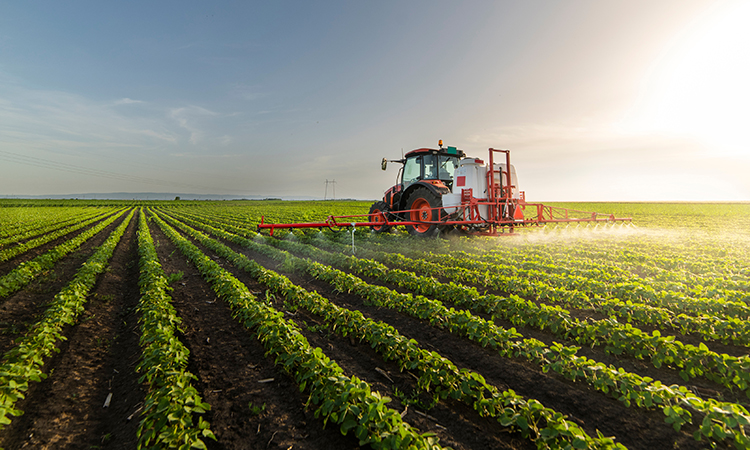New study finds PFAS increasingly being added to US pesticide products
- Like
- Digg
- Del
- Tumblr
- VKontakte
- Buffer
- Love This
- Odnoklassniki
- Meneame
- Blogger
- Amazon
- Yahoo Mail
- Gmail
- AOL
- Newsvine
- HackerNews
- Evernote
- MySpace
- Mail.ru
- Viadeo
- Line
- Comments
- Yummly
- SMS
- Viber
- Telegram
- Subscribe
- Skype
- Facebook Messenger
- Kakao
- LiveJournal
- Yammer
- Edgar
- Fintel
- Mix
- Instapaper
- Copy Link
Posted: 24 July 2024 | Leah Hockley | No comments yet
A comprehensive review has found that 14 percent of all US pesticide active ingredients are PFAS – known as ‘forever chemicals’.


A peer-reviewed study published in the journal Environmental Health Perspectives has found that per- and polyfluoroalkyl substances (PFAS), known as ‘forever chemicals’, are increasingly being added to U.S. pesticide products, contaminating waterways and posing potential threats to human health.
The study, Forever Pesticides: A Growing Source of PFAS Contamination in the Environment, is the first-ever comprehensive review of the many ways that PFAS are introduced into US pesticide products. Pesticides containing PFAS are used throughout the country on staple foods such as corn, wheat, kale, spinach, apples and strawberries. They are widely used in people’s homes in flea treatments for pets and insect-killing sprays.
Researchers at the Center for Biological Diversity, Environmental Working Group (EWG) and Public Employees for Environmental Responsibility (PEER) compiled data on sources of PFAS in pesticide products. Those sources range from specific ingredients intentionally added to pesticides to contamination via leaching from fluorinated storage containers.
The study’s major findings include:
- Troubling trend: 14 percent of all US pesticide active ingredients are PFAS, including nearly one-third of active ingredients approved in the past 10 years
- The worst of the worst: PFOA and PFOS, thought to be among the most toxic PFAS chemicals, have been found in some pesticide products, likely from the leaching of fluorinated containers and other unknown sources
- Persistent water pollutants: PFAS ingredients in pesticide products have been found in streams and rivers throughout the country
- Complex mixtures: Pesticides can accumulate PFAS from multiple sources, leading to mixtures of different PFAS chemicals in containers
- Oversight deficiencies: The current U.S. pesticide regulatory framework is not equipped to adequately identify and assess the risks from PFAS in pesticides.
“This is truly frightening news, because pesticides are some of the most widely dispersed pollutants in the world,” said Nathan Donley, Environmental Health Science Director at the Center for Biological Diversity. “Lacing pesticides with forever chemicals is likely burdening the next generation with more chronic diseases and impossible cleanup responsibilities. The [United States Environmental Protection Agency (EPA)] needs to get a grasp on this fast-emerging threat right away.”
“Toxic PFAS have no place in our food, water or homes, posing a serious threat to our health and environment,” said David Andrews, Ph.D., a senior scientist at the Environmental Working Group. “The increasing use of PFAS pesticides will lead to increasing levels of PFAS in the environment. Their presence not only endangers agricultural workers and communities, but also jeopardises downstream water sources, where pesticide runoff can contaminate drinking supplies. From home gardens to pet care, the use of these pesticide products further illustrates why we must end all non-essential uses of these persistent ‘forever chemicals’.”
“I can think of no better way to poison people and the environment than to spray PFAS-laden pesticides on our crops and in our homes,” said PEER Science Policy Director, Kyla Bennett. “The blame for this contamination crisis lies squarely on EPA’s shoulders.”
PFAS are intentionally being added to pesticides in part to increase the stability of pesticide ingredients and improve pesticides’ ability to kill living organisms.
Related topics
Contaminants, Food Safety, Health & Nutrition, Pesticides, Research & development
Related organisations
Center for Biological Diversity, Environmental Working Group (EWG), Public Employees for Environmental Responsibility (PEER)









